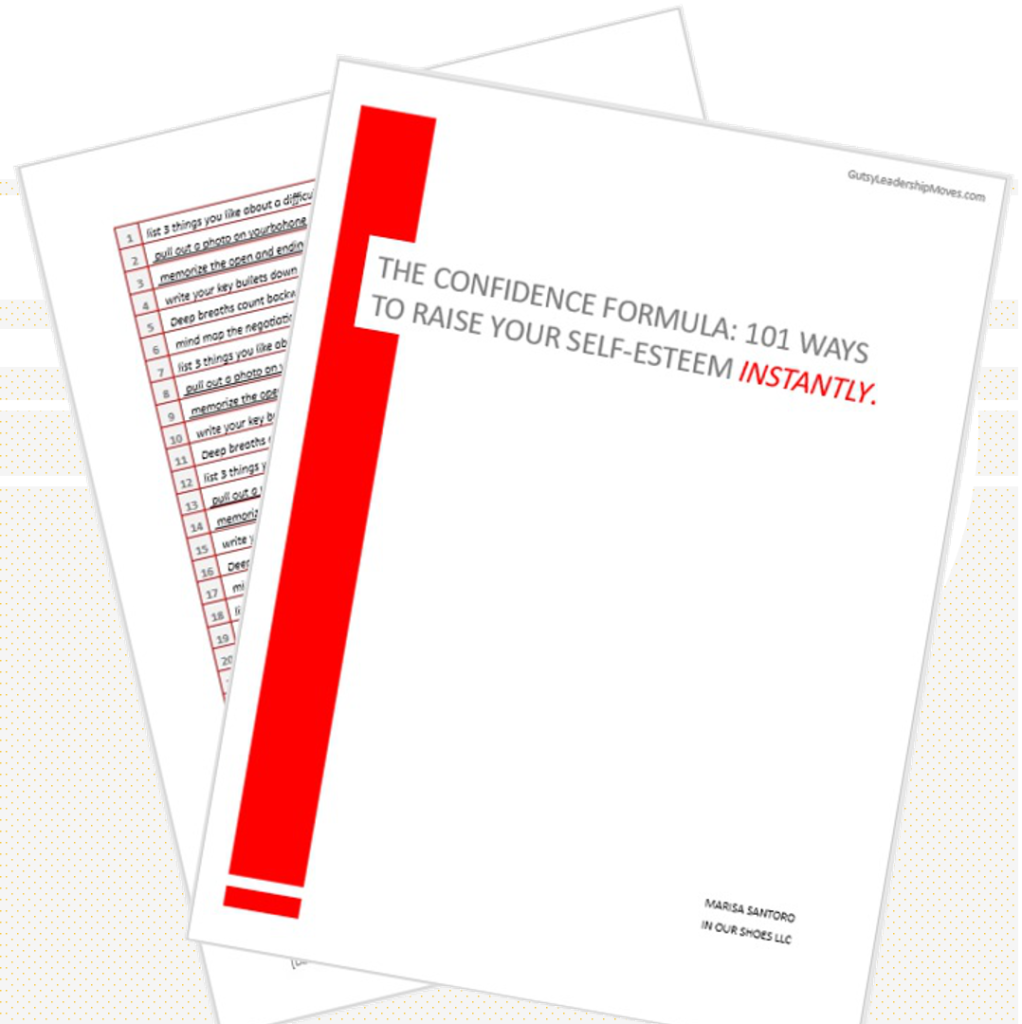You found the job that you want, and you’ve been given an offer, how do you negotiate your pay and counter that job offer?
Today, we’re talking about negotiating your salary. The first thing that you want to do before that actual job offer comes across the table is know the numbers for that role.
What is the salary range? When you have a solid understanding of those numbers your response when countering a job offer is backed by data that you can come to the bargaining table with. When you hear the offer, if you feel like it is not within that salary range or you feel like you can probably do a little bit better, then I want you to feel free, (and this is your gutsy moves in play here) I want you to feel free to say:
Please write these words down.
“That’s a bit too low. Lower than what I was expecting. Here’s what I was thinking…”
Pause.
“Hmmm, that’s a little bit too low. Here’s what I was thinking…”
Now sometimes offers don’t come with one standard number. You may be given base salary plus bonus which makes up the total compensation. So you want to view the total compensation offer when you’re having this conversation.
Before I forget, I want to be sure you know about my audio leadership course (it’s free) that’s designed to help you own your authority in your career and it works. It’s based on two decades of leading in Corporate America, (I’m a former Wall St. Executive) and those professionals I coach here at In Our Shoes
To Negotiate a Job Offer Do Your Research

Now back to your job offer! I have heard from so many people over the years that when they did their research, and know the ranges of a particular job, that’s when they can enter into the conversation with confidence. Remember, when you do all of that research, you’re coming in with intelligence. You’re going in there with a very good understanding of what the market value is, for hiring you and for the for the role that you’ve been selected for.
It’s not enough to say: “Well, you know what, I think that’s a little too low.” You want to give them something to work with.
Let’s also discuss how you respond. Initially, you want to approach it as excited. Be thankful that you have it and let them know that you’re very excited to take on the role. Say “Thank you.”
Give them Data To Work With when you Counter a Job Offer
Let them know why you feel that the offer they’ve given you is too low. You want to cover your skills, experience and knowledge of the market.
In many ways, this isn’t even just about a job interview. This is a leadership strategy where you are promoting your work and speaking in metrics throughout your career. Why? Because people can retain and digest numbers.
Focus on the areas that justify why you feel that you should be given a higher number and then close that meeting with excitement, again always say “Thank you” and then wait it out.
Aside from higher compensation you may want more flexibility instead. Say you want to work from home one day a week. You want to explain why you are asking for flex-time much like I discussed above when justifying your skills and experience.
Maybe you have a child that comes home from school early on Fridays, and you need to be there. That’s your arrangement therefore you are asking for 1 day work from home. Well, that’s a number that you can share as well when given a job offer. You always want to state the reasons why you’re asking for more compensation or flexibility in this case.
Give them a number to work with. Don’t leave it up to them, waving in the wind out there for them to decide. You decide first.

This way you are empowering them to go back with something solid to work with.
Break out the calculator.
Now let’s just say you are looking for a 10% or 15% increase, I want you to ask for 20% so that they can come down a little. Give them some wiggle room in case they do come back and don’t accept the initial number you put down.
Btw: If you’re new to my work at In Our Shoes and Gutsy Leadership, you always want to go into any situation, whether it be an interview, negotiating an offer, speaking with your manager, managing up or even a key client meeting with HIGH INTENTION, LOW ATTACHMENT.
Keep your spirit high. Go into that conversation with High Intention, Low Attachment.

High intention, meaning you are very clear on what it is that you’re asking for. You are very clear on what you want to create by the time you leave that room or phone call or Zoom meeting.
Low attachment, meaning you are letting it go. That doesn’t mean give up. It just means that you went in there stating the facts and your ASK in this case and very rationally laid out your case as to why you feel like you should have a better job offer given the assets that you’re bringing to the table, followed by low attachment.
Let it go, move on and wait it out.
Alright, please watch the entire video above and go ahead and leave a comment for me below or a question!
To your gutsy moves, I am cheering you on.🥂


Ready to make a Gutsy Career Breakthrough?
The Confidence Formula: 101 Ways to Communicate with Clarity at Work. Download our FREE Report

Join our free Audio Leadership course to Own Your Authority at work.
Grab a notebook, sit back with a cup of tea, coffee or glass of wine and listen in! Learn more below.

Leave a Reply